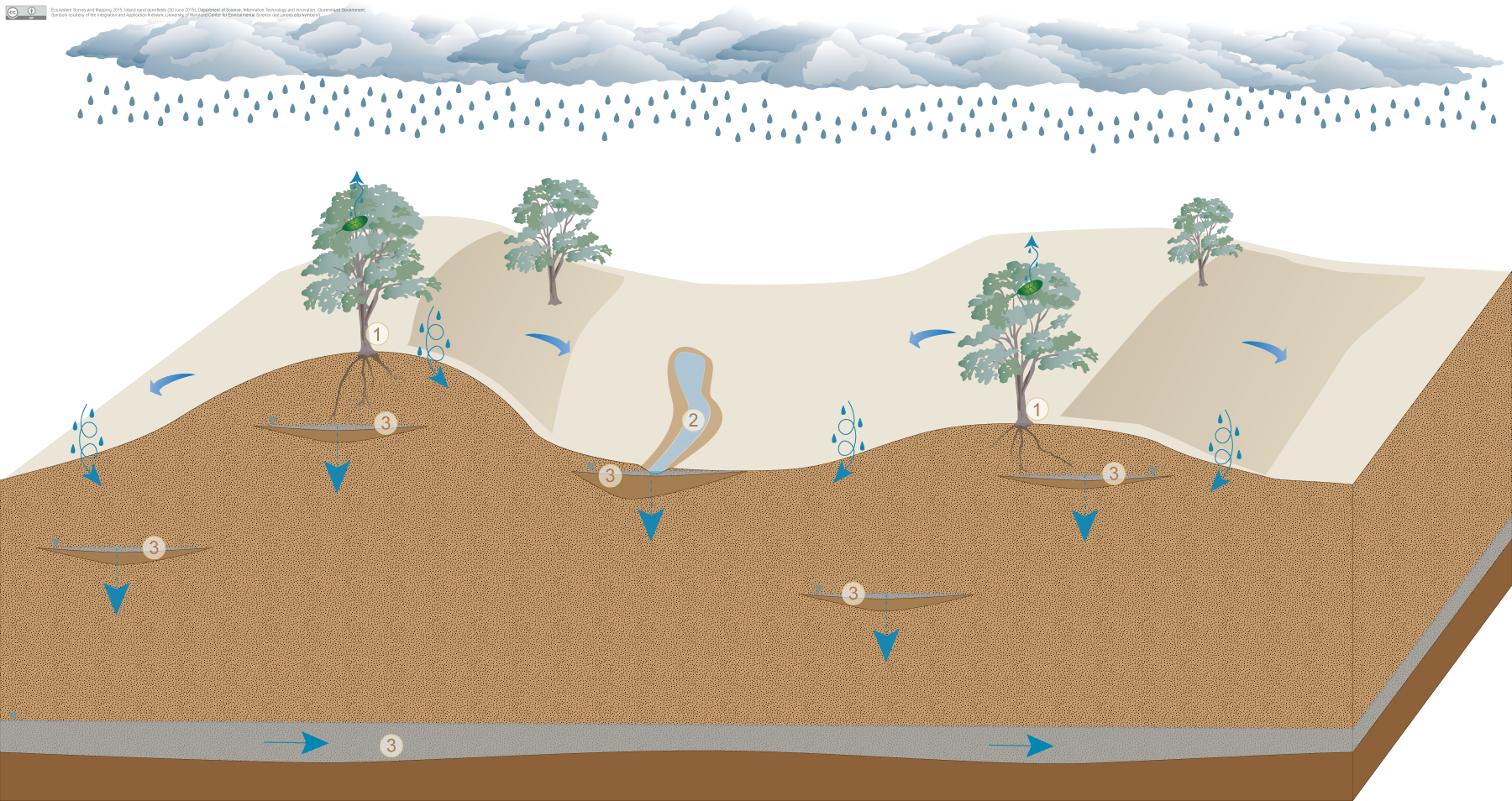|
|
Wind-blown inland sand dunefieldsWind-blown inland sand dunefields
Click on elements of the model or select from the tabs below Click on elements of the model or select from the tabs below Inland sand dunefields are composed largely of unconsolidated sand deposited by wind (aeolian processes). These inland sand dunefields can store groundwater in local, intermediate or regional groundwater flow systems and also in perched aquifers formed by layers of clay dominated material.
Pictorial conceptual model PDF Additional links
Last updated: 18 December 2015 This page should be cited as: Queensland Government, Queensland (2015) Wind-blown inland sand dunefields, WetlandInfo website, accessed 18 March 2024. Available at: https://wetlandinfo.des.qld.gov.au/wetlands/ecology/aquatic-ecosystems-natural/groundwater-dependent/wind-blown-inland-sand-dunefields/ |

 — Department of Environment, Science and Innovation
— Department of Environment, Science and Innovation

